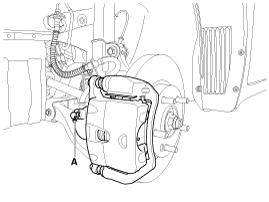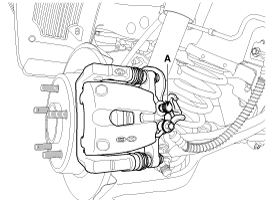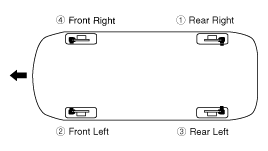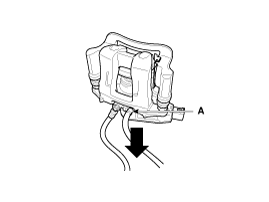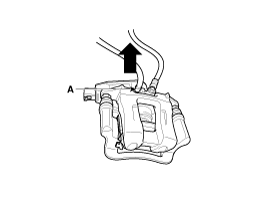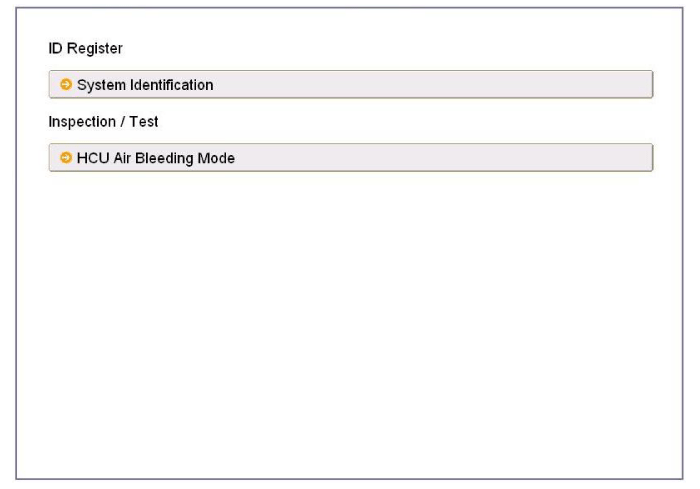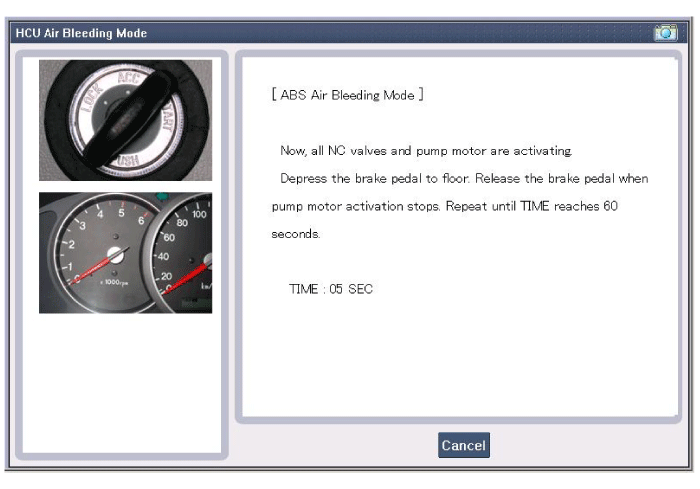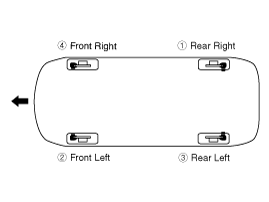Kia Cee'd: Brake System / Repair procedures
| Operation and Leakage Check |
|
Component |
Procedure |
||||
|
Brake Booster (A) |
Check brake operation by applying the brakes during a test drive. If the
brakes do not work properly, check the brake booster. Replace the brake
booster as an assembly if it does not work properly or if there are signs
of leakage. |
||||
|
Piston cup and pressure cup inspection (B) |
|
||||
|
Brake hoses (C) |
Look for damage or signs of fluid leakage. Replace the brake hose with a
new one if it is damaged or leaking. |
||||
|
Caliper piston seal and piston boots (D) |
Check brake operation by applying the brakes. Look for damage or signs of fluid leakage. If the pedal does not work properly, the brakes drag, or there is damage or signs of fluid leakage, disassemble and inspect the brake caliper. Replace the boots and seals with new ones whenever the brake caliper is disassembled. |
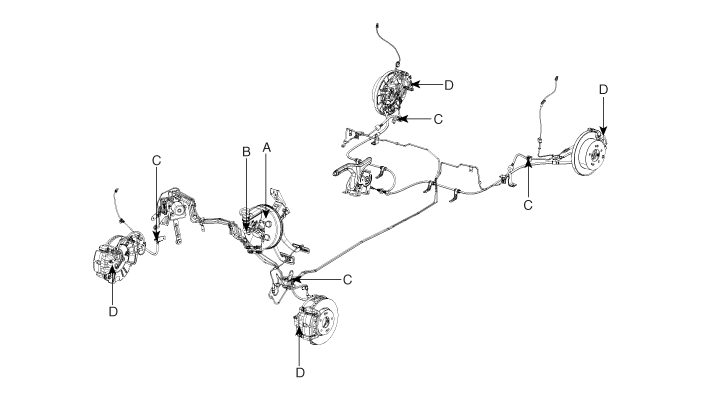
|
| 1. |
Make sure the brake fluid in the reservoir is at the MAX(upper) level
line.
|
| 2. |
Have someone slowly pump the brake pedal several times, and then apply
pressure.
|
| 3. |
Loosen the right-rear brake bleed screw (A) to allow air to escape from
the system. Then tighten the bleed screw securely.
Front Disc Brake
Rear Disc Brake [Without EPB]
Rear Disc Brake [With EPB]
|
| 4. |
Repeat the procedure for wheel in the sequence shown below until air
bubbles no longer appear in the fluid.
|
| 5. |
Refill the master cylinder reservoir to MAX(upper) level line.
|
| 1. |
Loosely tighten the caliper on the vehicle, and then perform air bleeding
a number of times in the same way as performed on a general caliper.
(For both LH/RH)
|
| 2. |
Remove the caliper from the vehicle, and then press the brake pedal
to get the piston to protrude(A). (Make the two pads and the piston
come in contact. You may insert a block that has a disc thickness of
about 5 mm between the pads.)
|
| 3. |
Move the caliper position so that the bleed screw (A) is facedown, and
then press the brake pedal to let out the brake oil. (2 - 3 times)
|
| 4. |
Move the caliper so that the bleed screw (A) is facing upward, as shown
in the diagram.
|
| 5. |
Open the bleed screw from this position, and press the brake pedal to
let out more oil and air. (More than 5 times)
|
| 6. |
Push in the piston and mount the caliper on the vehicle. Then repeat
steps 2 - 5 for the caliper on the opposite side. Then install both
calipers on to the vehicle.
|
| 7. |
Pump hard on the brake pedal a few times, and then loosen the bleed
screw to let out oil with high pressure. Then quickly tighten the bleed
screw. (About 3 times) Complete the procedure. (For both LH/RH)
|
| 1. |
Remove the reservoir cap and fill the brake reservoir with brake fluid.
|
| 2. |
Connect a clear plastic tube to the wheel cylinder bleeder plug and
insert the other end of the tube into a half filled clear plastic bottle.
|
| 3. |
Connect the GDS to the data link connector located underneath the dash
panel.
|
| 4. |
Select and operate according to the instructions on the GDS screen.
|
| 5. |
Pump the brake pedal several times, and then loosen the bleeder screw
until fluid starts to run out without bubbles. Then close the bleeder
screw(A).
Front Disc Brake
Rear Disc Brake [Without EPB]
Rear Disc Brake [With EPB]
|
| 6. |
Repeat step 5 until there are no more bubbles in the fluid for each
wheel.
|
| 7. |
Tighten the bleeder screw.
|
 Brake System
Brake System
...
 Brake Booster Components and components location
Brake Booster Components and components location
Components [LHD]
1. Brake booster
2. Master cylinder assembly
3. O-ring
Components [RHD]
1. Brake booster
...
Other information:
Kia Cee'd JD Service Manual: Valve clearance adjustment
Valve Clearance Inspection
And Adjustment
Inspect and adjust the valve clearance when the engine is cold (Engine
coolant temperature : 20°C) and cylinder head is installed on the cylinder
block.
...
Kia Cee'd JD Owners Manual: Voice Recognition and
Phonebook Tips
The Kia Voice Recognition System
may have difficulty understanding
some accents or uncommon names.
When using Voice Recognition to
place a call, speak in a moderate tone,
with clear pronunciation.
To maximize the use of Voice
Recognition, consider these guidelines
when storing contacts ...


